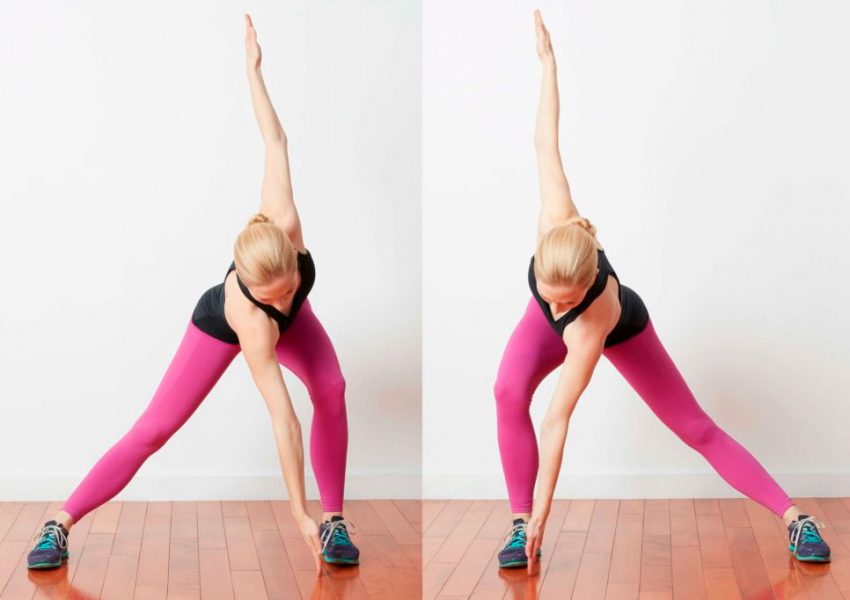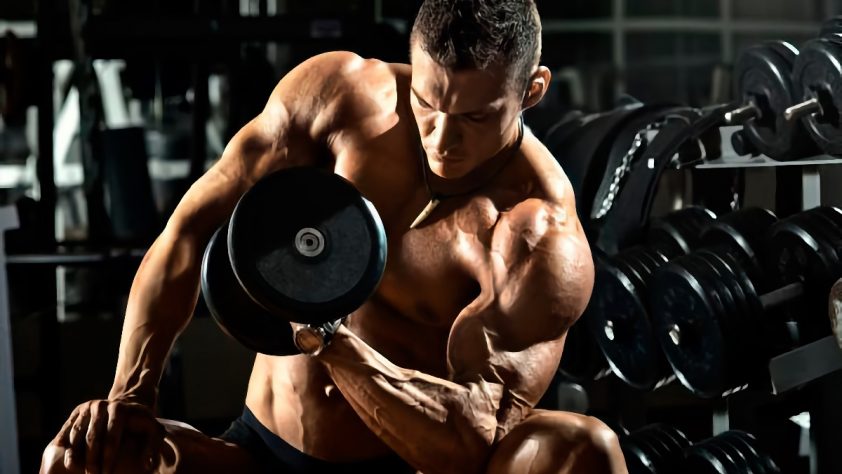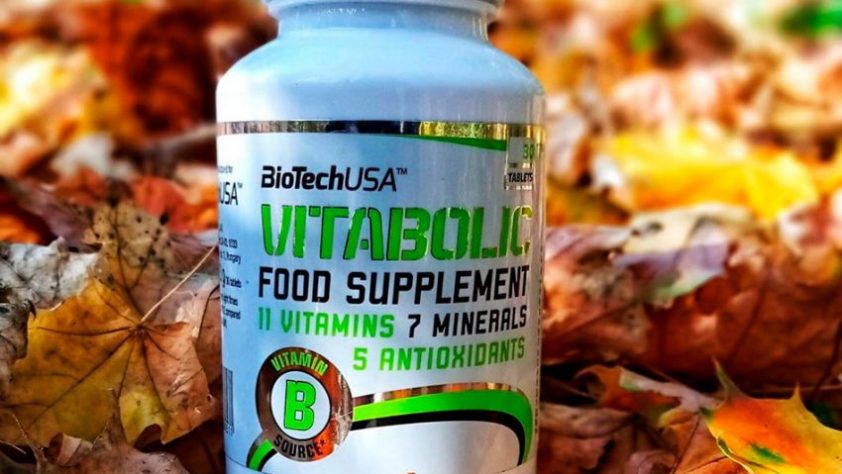Few people know, but there are two exercises “Mill”. One is the warm-up movement familiar to everyone from physical education at school. Done without weight, it serves to stretch the muscles of the posterior chain and strengthen the core. But the second is a serious power movement with weights. Serves to strengthen obliques, lats, deltoids, and to improve stretching and balance. Technically, “mills” are similar, but they are different movements from a biomechanical point of view.
The benefits of exercise

The movement is used as a warm-up movement in athletics. Before jogging, it helps to release the tightness of the core and slightly stretch the muscles of the back of the thigh. In fitness it is often considered a “side exercise”, but this is not entirely true. The movement trains the muscles; with fat deposits on the sides, it does nothing, if only because the energy consumption will be quite average. Exercises for losing weight on the sides do not exist, so what is the “mill” useful for?
- Improves blood circulation in both the upper and lower body, prepares the body for work;
- Increases mobility;
- Helps to stretch the muscles of the back of the thighs in statics;
- Stretches lats and pectorals in dynamics;
- Gives muscle tone;
- Works on coordination.
The kettlebell lifting mill is a specific exercise to improve the snatch and clean and jerk. It increases not so much strength and dexterity as mobility in the hip joints, and helps to perform more complex movements correctly.
To whom and when is it suitable
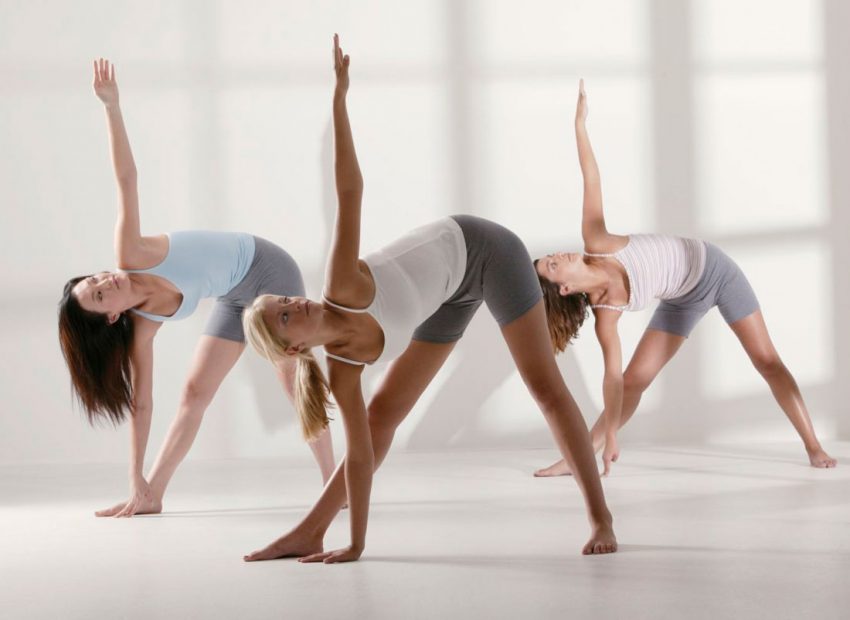
The movement is universal. For athletics athletes, it is included in the warm-up to help increase the flexibility of the ankle and hip joints and stretch the hamstrings.
In fitness, it solves a wide range of tasks:
- helps those exercising in the gym to warm up and warm up before a workout that combines movements for both the upper body and leg muscles;
- is one of the warm-up exercises for the deadlift in the “sumo” style;
- in home training, it helps both to warm up and tone the muscles;
- improves mobility and flexibility even in those who neglect stretching and cardio;
- relieves back pain;
- improves blood circulation in the pelvic organs;
- stretches the latissimus and pectoral muscles.
The exercise is simple enough. It is categorically not suitable only for people with injuries of the hamstrings, hamstrings and spine. With hernias and protrusions, a specialist consultation is required, since rotation may not be at all what is required to maintain health.
Execution technique
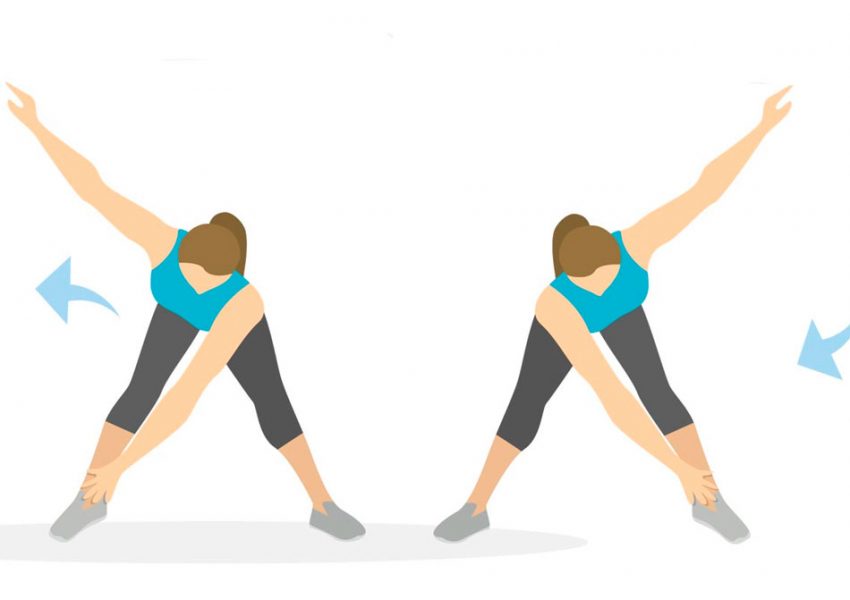
Movement without burden
- Stand up straight, tighten your stomach, bring the shoulder blades to the spine and lower them slightly down;
- Put your feet wider than your shoulders;
- Perform hip flexion and downward bend;
- The legs remain straight, one hand rests with the palm on the floor or touches it with the fingers at approximately the same distance from the feet;
- The second arm is extended to the ceiling;
- In one motion, you should change hands in space;
Work for the required number of repetitions.
Kettlebell lifting exercise
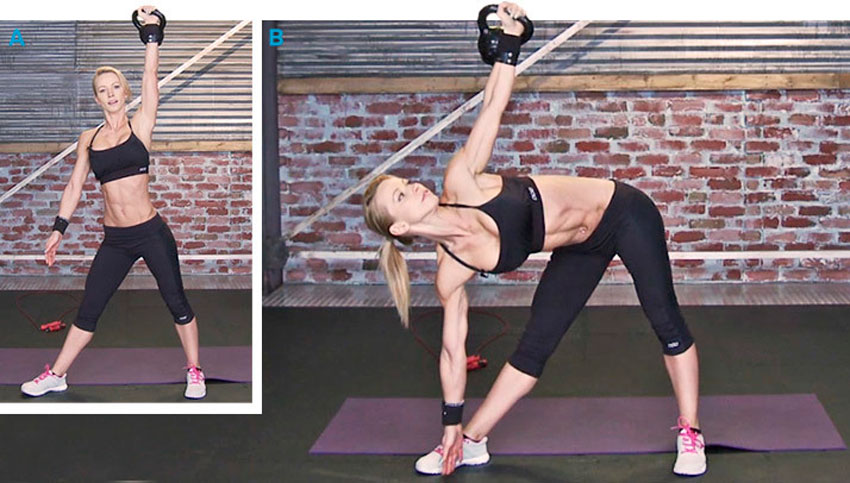
- Take the starting position as in a conventional mill;
- A kettlebell in a simple version is located in the hand, which will slide down to the floor;
- In the complicated one – in the hand raised to the ceiling;
- The feet are shifted towards the hand working to the floor, turned about 30 degrees. The exercise resembles the yoga pose of the triangle;
- The free hand is extended upward to the ceiling, the working hand – to the floor, and slides along the thigh and lower leg;
- The movement resembles a thrust – touching the floor with the projectile means that it is necessary to move up again;
- When holding the kettlebell in the upper hand, it is necessary to keep the balance so that the wrist does not “break”.

